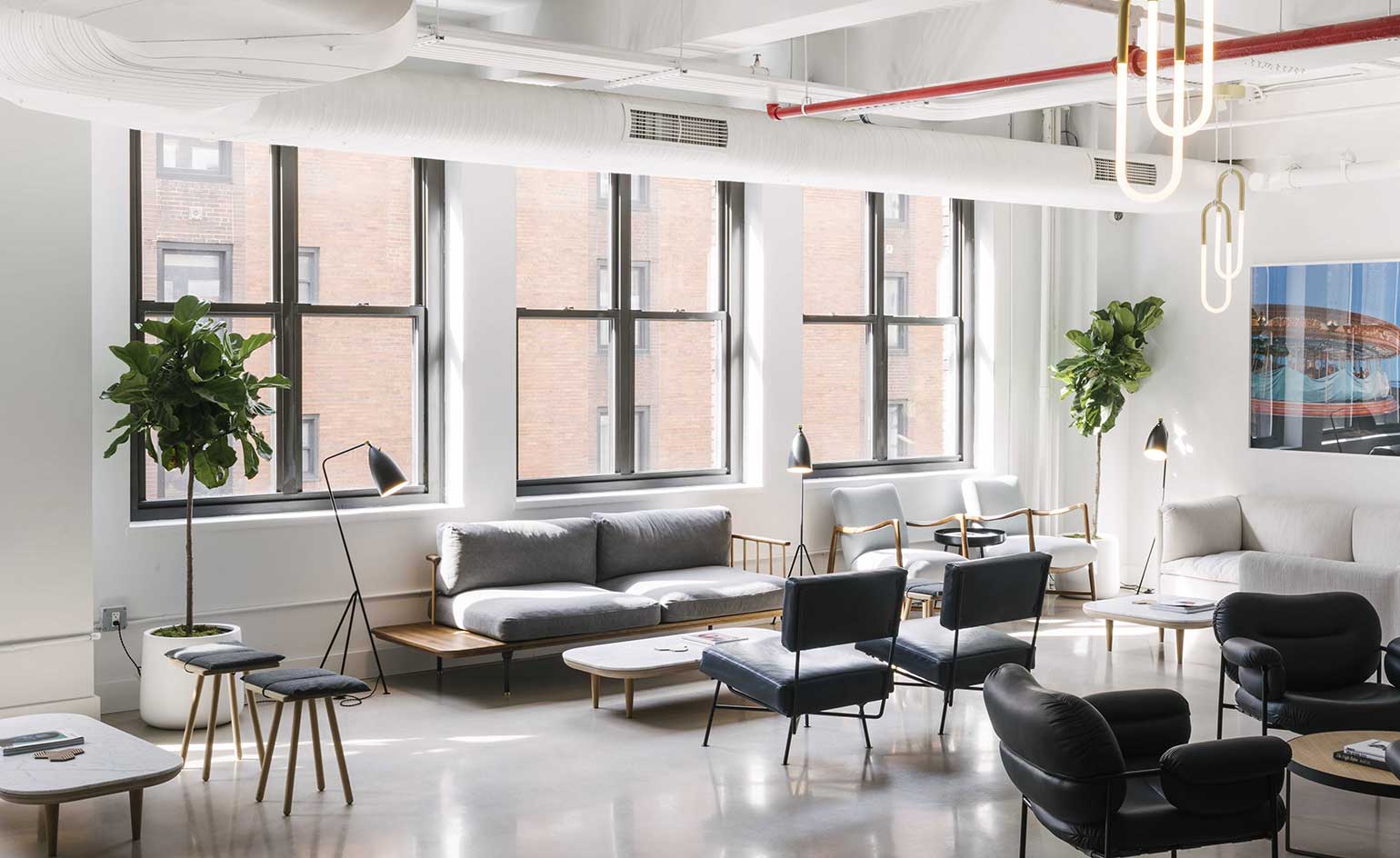
Office drones may have missed the memo, but the co-working office model is all the rage now, as communal desks meet mobile workers meet Starbucks.
That said, there have been detractors, especially amongst designers such as Jeremy Levitt and Andrew Cohen, co-founders of New York-based Parts and Labor, who decries the predictability of 21st century co-working office design. ‘Too often we’re seeing the same youthful, millennial-driven concepts,’ he says.
Which is why when his studio was approached by Peter Korbel, Amro Qaddura and Scott Sassoon to create Blender, a co-working office on the eighth floor of a turn-of-the-century block in mid-town Manhattan near Madison Square Park, it was an opportunity to work in what he describes as ‘the elegant tones and materials of the mid-century era, while also integrating intuitive technology and modern industrial accents’.
The result is a light-washed 15,000 sq ft volume comprising 36 private offices and conference rooms lit by Allied Maker, Gubi, Lambert & Fils, and Roll and Hill, alongside furniture by Fogia, Lawson Fenning and Overgaard & Dyrman. Offices, nooks and break-out spots are delineated from the open office space by blackened steel dividing walls, frosted glass windows and oak doors, while brass handles, thick rugs and timber floors add warmth. And in an unexpected homage to old Hollywood, the bathrooms are kitted out with decorative hardware and jungle-inspired wallpaper by London-based Witch and Watchman.
Cleaving close to the notion that nothing brings strangers together better than a communal watering hole, the heart of Blender is a 2,500 sq ft cafe and lounge that incorporates a large bar framed by walnut, brass and hand-blown globes, and a gallery wall lined with a changing roster of original artwork. As Levitt points out, ‘The idea of incorporating artwork, music, wellness and other cultural experiences as an equal to the workspace, was something that played a big role during the inception of Blender.’
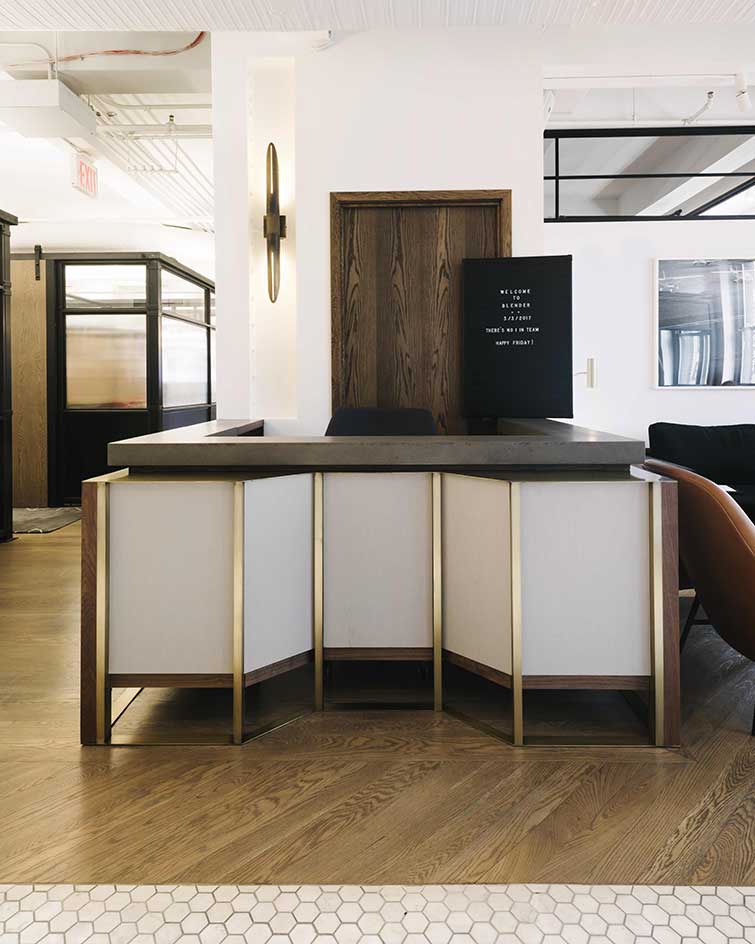
‘Too often we’re seeing the same youthful, millennial-driven concepts,’ says Jeremy Levitt, co-founder of Parts and Labor
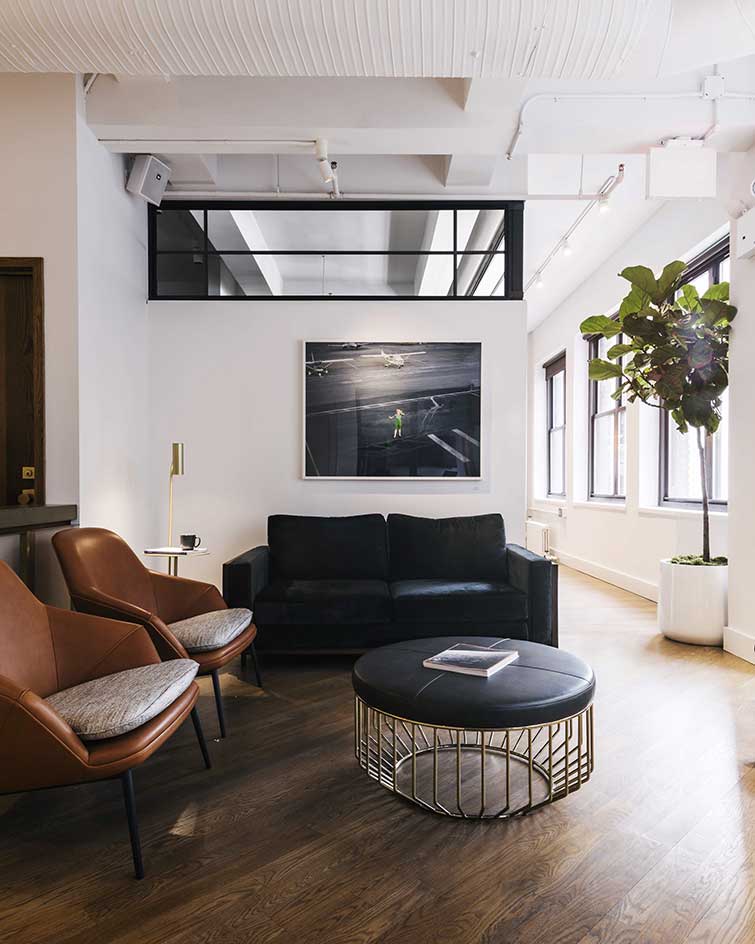
The design incorporates ‘the elegant tones and materials of the mid-century era, while also integrating intuitive technology and modern industrial accents’, says Levitt
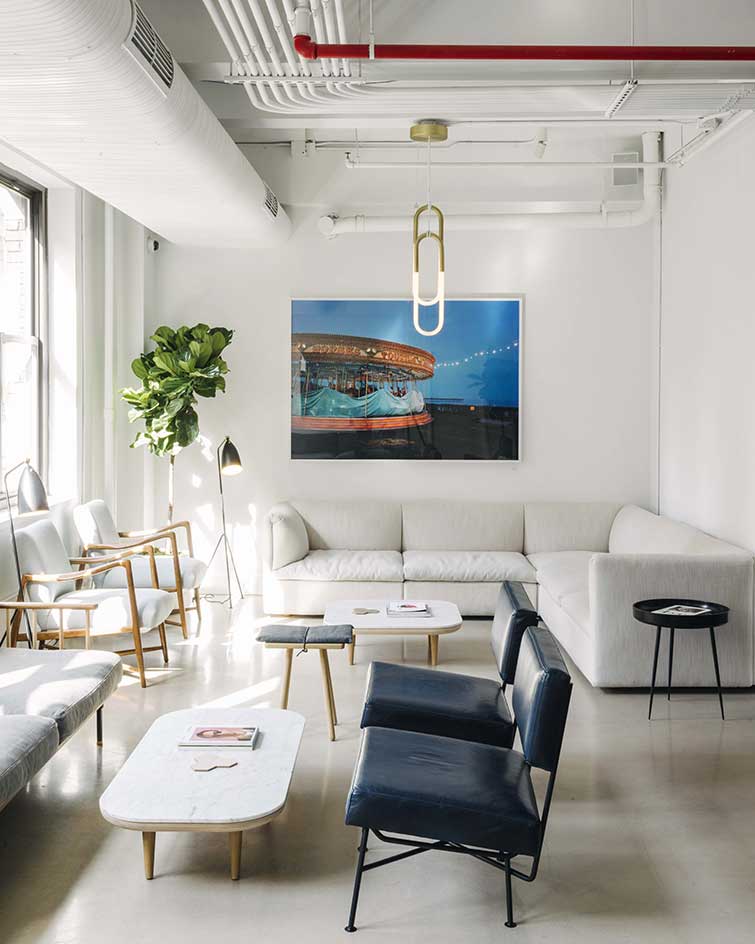
The result is a light-washed 15,000 sq ft volume comprising 36 private offices and conference rooms
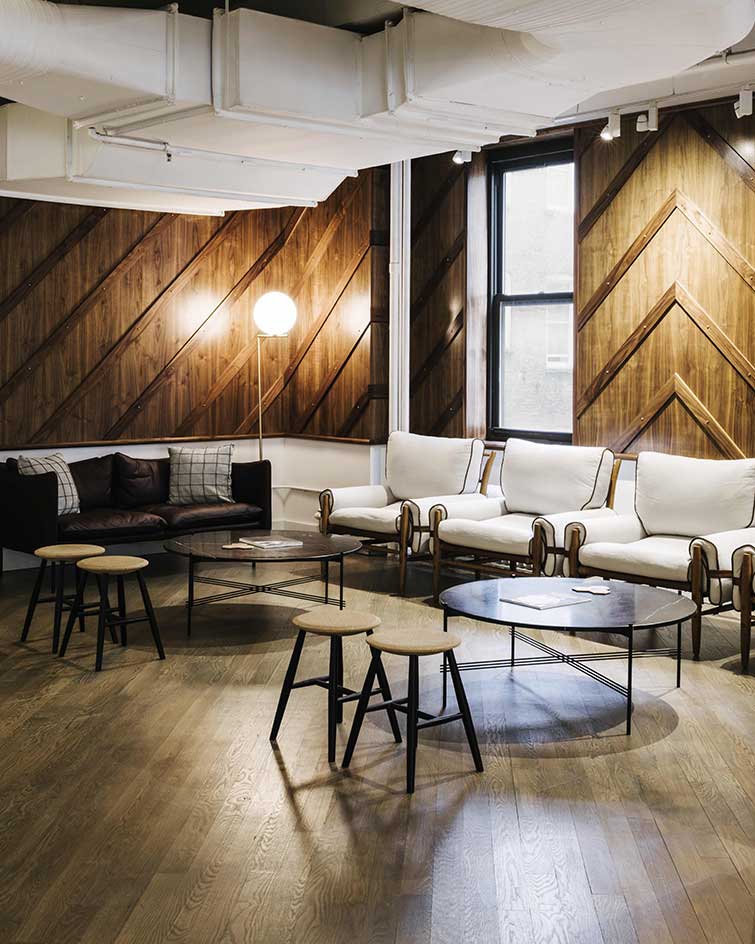
Offices, nooks and break-out spots are delineated from the open office space by blackened steel dividing walls, frosted glass windows and oak doors
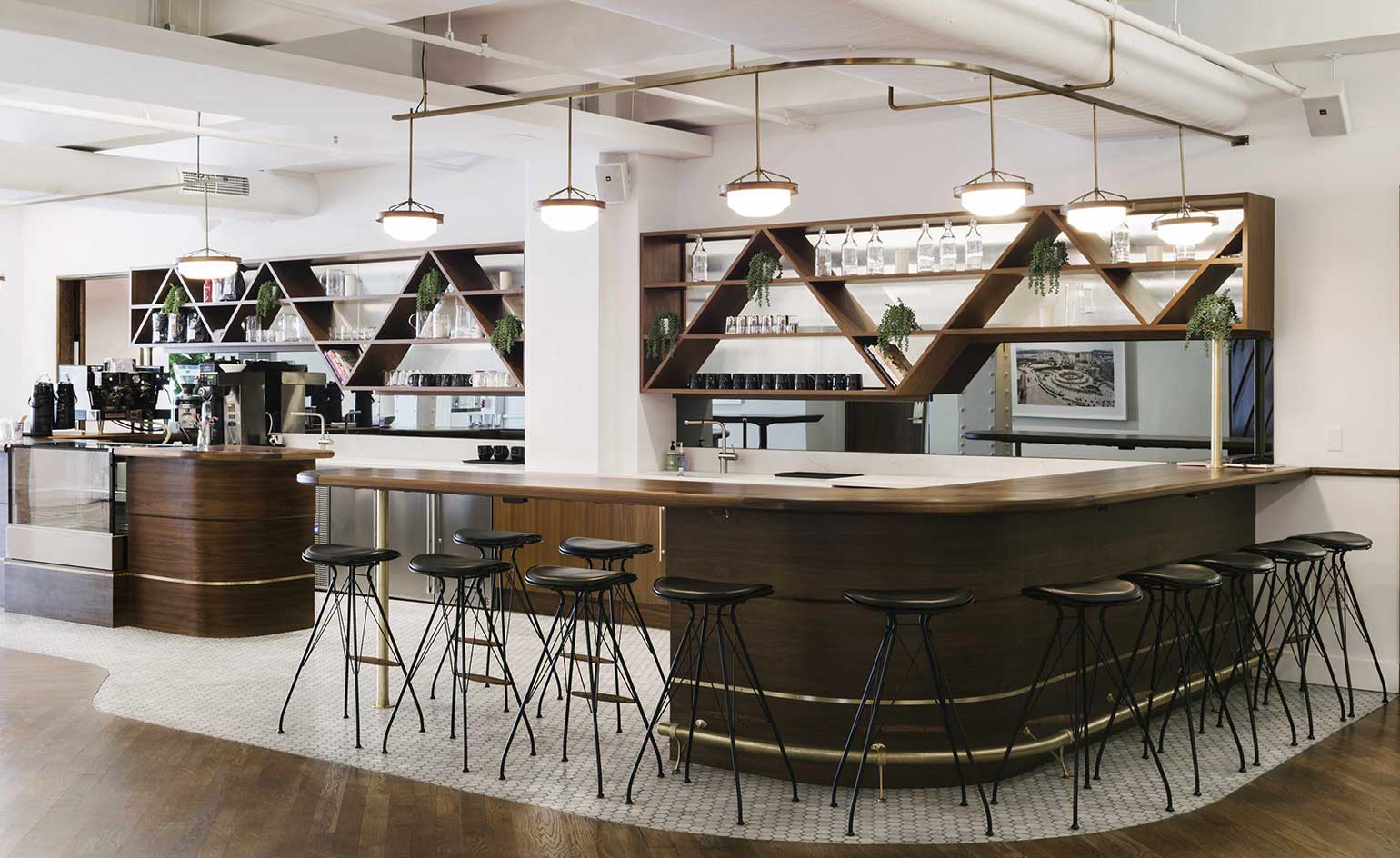
The heart of Blender is a 2,500 sq ft café and lounge, and a gallery wall lined with a changing roster of original artwork
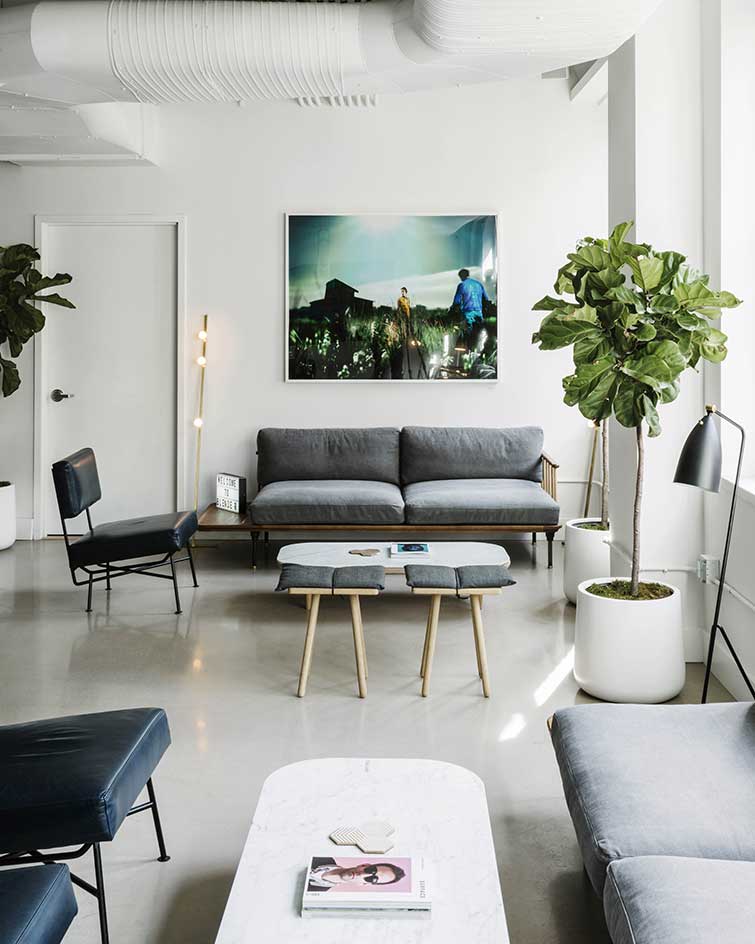
As Levitt points out, ‘The idea of incorporating artwork, music, wellness and other cultural experiences as an equal to the workspace, was something that played a big role during the inception of Blender’
INFORMATION
Website
ADDRESS
135 Madison Avenue
Receive our daily digest of inspiration, escapism and design stories from around the world direct to your inbox.
Daven Wu is the Singapore Editor at Wallpaper*. A former corporate lawyer, he has been covering Singapore and the neighbouring South-East Asian region since 1999, writing extensively about architecture, design, and travel for both the magazine and website. He is also the City Editor for the Phaidon Wallpaper* City Guide to Singapore.
-
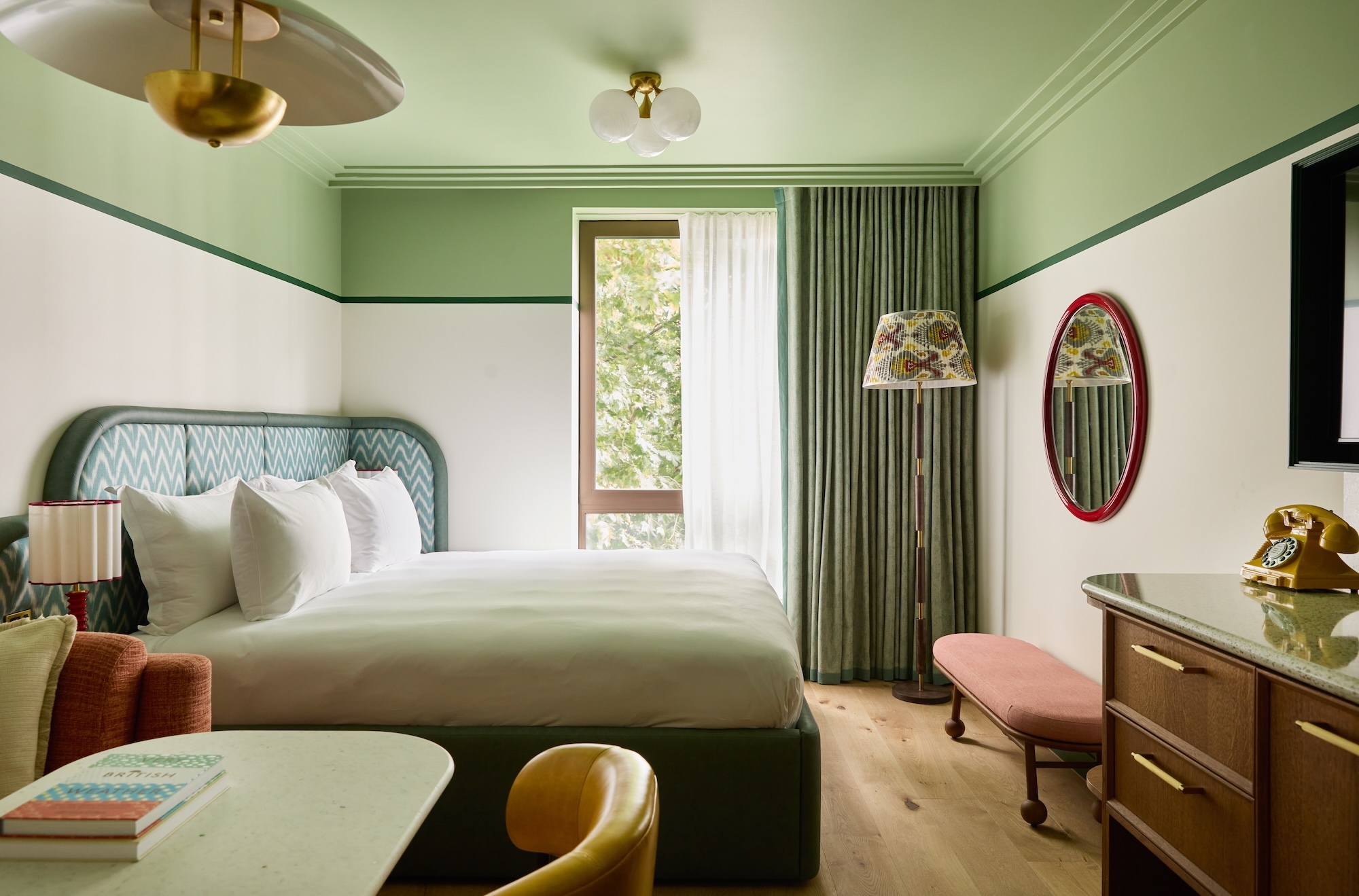 At last: a London hotel that’s great for groups and extended stays
At last: a London hotel that’s great for groups and extended staysThe July London Victoria, a new aparthotel concept just steps away from one of the city's busiest rail stations, is perfect for weekends and long-term visits alike
-
 Three new smartwatches showcase new frontiers in affordable timepiece design
Three new smartwatches showcase new frontiers in affordable timepiece designLong may you run: smartwatches from Withit, Kospet and OnePlus favour function and value above all else, demonstrating just how much the smartwatch has evolved in recent years
-
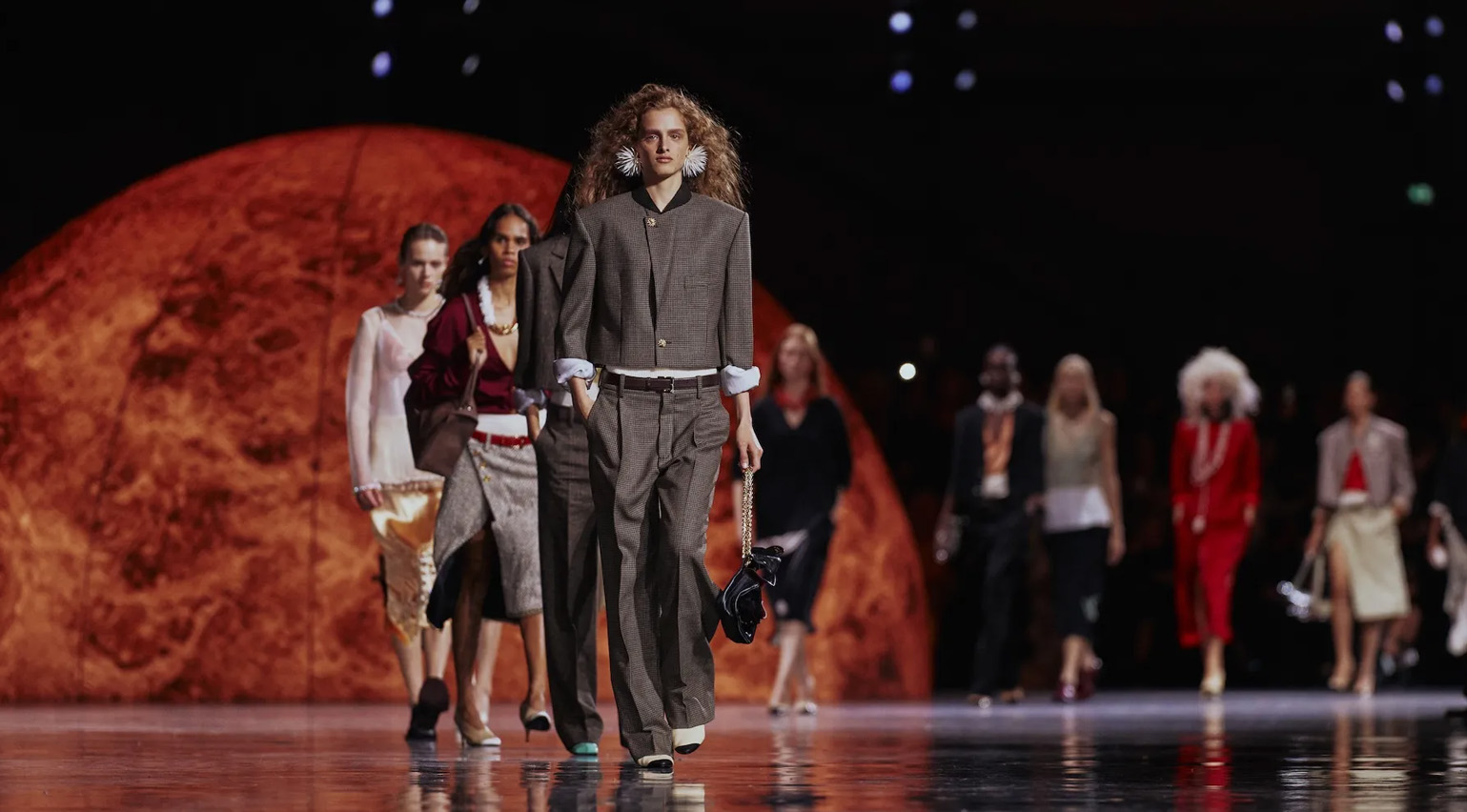 Debuts, dandies, Demi Moore: 25 fashion moments that defined 2025 in style
Debuts, dandies, Demi Moore: 25 fashion moments that defined 2025 in style2025 was a watershed year in fashion. As selected by the Wallpaper* style team, here are the 25 moments that defined the zeitgeist